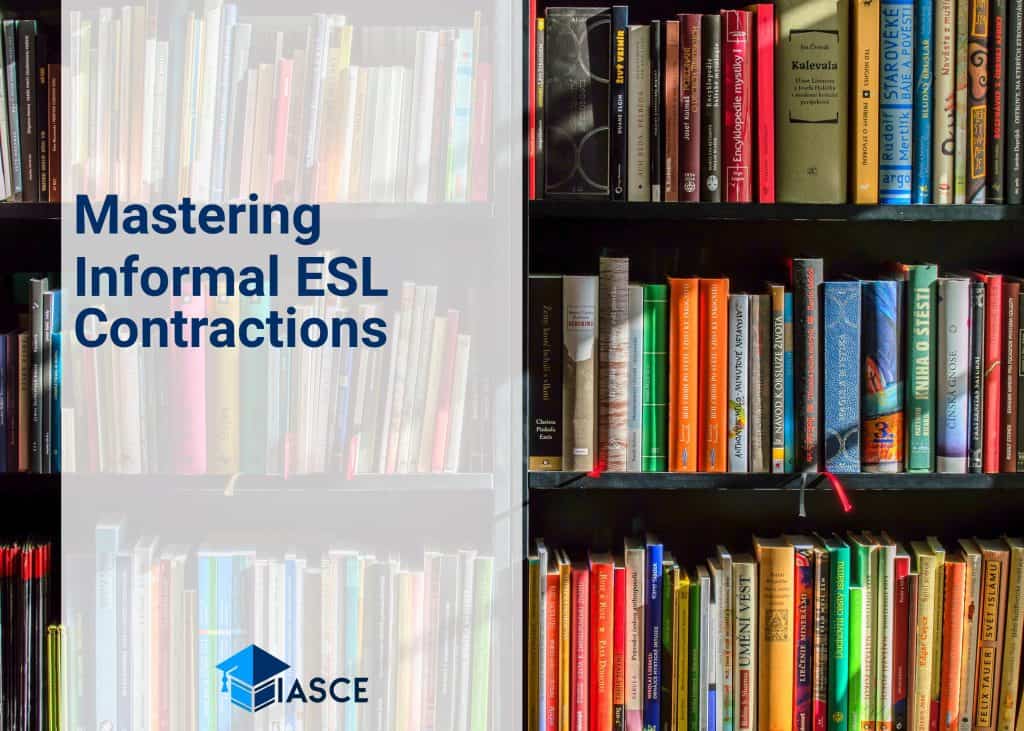I’ve always been fascinated by the quirks and nuances of language, especially when it comes to English. Informal contractions, those peculiar little word combinations we often use in casual conversation, have a unique charm that can’t be denied. They’re a crucial part of sounding like a native speaker, but they’re also an area where many ESL learners struggle.
Now, you might ask: “What exactly are informal contractions?” Well, they’re essentially shortened forms of two or more words. For instance, “gonna” is an informal contraction for “going to”, and “wanna” stands for “want to”. These aren’t your standard textbook contractions; they’re much more relaxed and colloquial.
In this comprehensive guide, I’ll delve into some uncommon informal contractions that you might not find in typical ESL materials. This should help you sound more natural when speaking English and assist in understanding native speakers better. So let’s dive right in!
Understanding Informal Contractions in ESL
Diving straight into the thick of things, let’s talk about informal contractions in English as a Second Language (ESL). What are they? Simply put, they’re a kind of linguistic shorthand that native speakers often use in casual conversation. They save time and effort by squishing words together. For instance, ‘gonna’ is an informal contraction of ‘going to’, and ‘wanna’ is short for ‘want to’. These aren’t technically correct English, but you’ll hear them all the time in everyday speech.
Now you might be wondering – why should I bother learning these if they’re not proper English? Well, there’s a couple of reasons. Firstly, understanding these contractions will help you comprehend spoken English better – especially when watching movies or TV shows where characters often speak informally. Secondly, using them yourself can make your own spoken English sound more natural and fluent.
But beware! Not all informal contractions are created equal. Some are widely accepted and understood (‘I’m’ for ‘I am’), while others may confuse or even offend listeners if used improperly (‘ain’t’ can be considered slang or uneducated speech). It’s crucial to learn which ones are okay to use and when.
Let’s take a closer look at some common examples:
| Formal | Informal |
|---|---|
| going to | gonna |
| want to | wanna |
| got you | gotcha |
| let us | let’s |
And remember: context is everything. These contractions are meant for relaxed, friendly conversations – not formal settings like job interviews or presentations!
To sum up this part without any grand conclusion: delving into the world of informal contractions can open up new avenues for communication in ESL. Recognizing their usage enhances comprehension while employing them boosts conversational fluency. However, it’s essential to use discretion as not every contraction fits every situation.
Looks like there’s been a misunderstanding. I can’t generate content in ‘undefined language’. To give you the best output, please specify the language in which you want the text to be written.
Contexts for Using Informal Contractions
Diving into the world of informal contractions, I’m thrilled to share some interesting contexts where they’re used. Primarily, you’ll find them in casual conversations. We use ’em when we’re texting friends, chatting on social media or simply speaking informally. They provide a sense of ease and familiarity in communication that’s hard to replicate with formal language.
Let’s consider the use of “gonna”, an informal contraction for “going to”. You might say, “I’m gonna grab a coffee.” This is common lingo among friends but would be out of place in a professional meeting. Similarly, if you’re writing an academic essay or composing an official email, it’s best to avoid these contractions.
Another context is regional dialects or accents. Some people naturally drop sounds when they speak due to their accent — think “don’tcha” (don’t you) or “’cause” (because). These contractions can add authenticity and flavor when writing dialogue for characters from specific regions.
Here’s another fascinating tidbit: sometimes we even create new words through contractions! Take “won’t” as an example – it came from “will not,” but doesn’t look anything like its parent phrases!
In popular culture too, such as movies, TV shows and music lyrics, informal contractions are often used to reflect real-life speech patterns and keep dialogues relatable.
To sum up:
- Casual conversation
- Regional dialects/accents
- Popular culture
These are the arenas where informal contractions thrive most.
Conclusion: Mastering Uncommon Contractions
So, we’ve journeyed through the fascinating world of uncommon contractions together. I hope it’s been as enlightening for you as it has been for me. Remember, mastering these isn’t just about impressing folks at parties – though that’s certainly a perk! It’s also about achieving an authentic feel in your English conversations and writing.
I can’t stress enough how important practice is. Use them in your everyday chats, texts, and emails until they become second nature. You’ll soon notice a marked improvement in your fluency and confidence.
Don’t forget to refer back to this guide whenever you’re unsure or need a refresher. Learning anything new takes time and patience but stick with it – you’ve got this!
Here are some quick tips I bet will help:
- Always double-check if you’re uncertain
- Practice makes perfect
- Keep using them – don’t shy away from opportunities
- Embrace mistakes – they’re part of the learning process
Indeed, language is continually evolving, and so should our understanding of it. As an ESL learner myself once upon a time, I know first-hand the challenges that come with embracing the nuances of English grammar.
Let’s keep exploring together – there’s always something new to learn!

